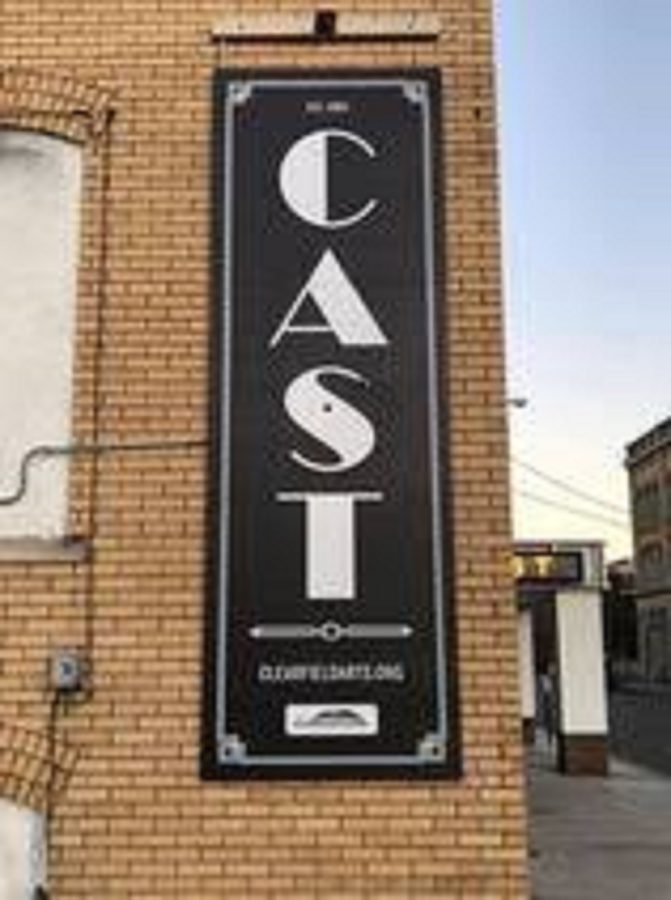Exploring how theatre ties together in our community
March 17, 2022
Clearfield gives multiple opportunities to aspiring actors living in our small town. These opportunities include the Drama Club within the high school, as well as Clearfield Arts Community Theatre, also known as CAST, which can be found downtown. CAST attempts to produce 5-6 major productions each year. These do not include the other smaller programs and classes that CAST also holds. This is a lot compared to the two shows that the Clearfield Drama Club does, with one show in the fall and another in the spring. Many students in the Drama Club also participate in CAST shows and activities. These students are what ties theatre together in our community.
There are significant differences between Drama Club and CAST that make them unique. CAST has been around for decades, whereas Drama Club has not been around as long. For instance, Mr. Strouse, Treasurer of the CAST board, gives his opinion on the theatrical representation in the high school when he states, “Our high school has a fantastic theatre program, as well as a music program. When I was in school at Clearfield, we did not really have a formal theater program. Every so often, there would be a production that a teacher would direct, but we did not have the fall play and spring musical like students have now. That alone is a huge step forward. I am glad our school is offering this for students.”
There are many differences between CAST and Drama Club, such as the size of the setting and the people involved. However, only a director could truly understand the difference between school and theatre. Mr. Strouse is also a teacher at the elementary school, so when asked the differences and similarities between directing a student actor in a show and teaching a student in the classroom, Mr. Strouse responded, “I have found that students who are engaged in extracurricular activities benefit from not just the experience itself, but also the time management aspect. Students also make positive connections with other students and teachers that will last a lifetime. If students take directions well on stage, they generally take direction well in the classroom. They are learning critical thinking, listening skills, and social skills that help them be a better student. According to Mr. Strouse, it is apparent that being involved in theatre is reflected on a student’s skills in the classroom. The instruction taken at school can improve when an actor learns to take instruction on stage.
As students and teachers interact in theatre, an out-of-school setting, it brings up questions as to how it benefits students to see their teachers in a new light. Mr. Strouse expresses what this relationship means to him when he shares, “At CAST, we offer theatrical experiences for people of all ages. This allows our students to ‘grow up’ in theatre and progress from the fun theatre classes as a young kid, into youth theatre productions, and eventually into more ‘professional’ opportunities as adults. Student actors involved with productions outside of school get the opportunity to work with other students, possibly outside of their own school, as well as other adults in the community. At CAST, we have dozens of adults who have years and years of experience in all aspects of theatre that are eager to share their knowledge with new people. This includes acting, but also areas of theatre that not all schools focus on such as marketing, box office management, etc. These are opportunities to grow and supplement involvement in school productions.” Mr. Strouse emphasized how teachers, along with other adults involved in theatre, can influence and pass on their knowledge to the next generation of actors. He also noted the other aspects of theatre that no one talks about, such as backstage work that is just as important to learn beside on-stage work.
While exploring the benefits of the relationship between student actors and teacher actors, it is also important to acknowledge a balance and separation between the two. When asked whether CAST has a balance between being youth-oriented and adult-oriented, Mr. Strouse answered, “CAST offers programming for all ages. We offer at least one major production each year that is geared toward the youth in our community. I’ve had the pleasure of directing several of these productions over the last few years. CAST recognizes that the youth in our community are the future of not just CAST but our entire community. We foster youth so that they can ‘grow up’ at CAST, as I mentioned before, and be lifelong members of CAST. Recently, we have had a group of young actors who have been doing the youth productions at CAST for a few years and are now moving into more mature theater. This is exciting for them. CAST is unique in that we can have a bubbly, campy, Disney-type performance for young children, but also have very emotional, deep, or at time even provocative adult performances. We like to offer something for everyone.”
Taking this look back at the history of theatre in the Clearfield community that include Drama Club and CAST, it is apparent that student actors make families out of these organizations. The teachers who are involved in theatre were once in the same position that student actors are in now, and these teachers are teaching their same classroom morals on the stage as well. Theatre is universal to all ages, which makes a huge impact on this “circle of life” that means the passion and wisdom for acting will be passed down generation to generation.


